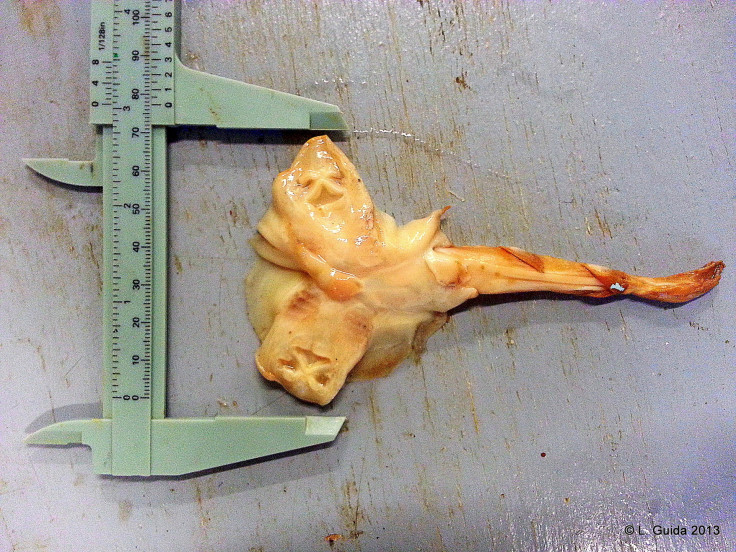Two-Headed Ray Fetus Discovered In Australia: Did Pollution Cause The Bizarre Birth Defect?

A rare two-headed ray fetus was discovered in Australia, and the bizarre bicephalic fish has researchers wondering what caused the deformity. This is the first time scientists have found a two-headed ray or shark in Australia, and it’s only one of a handful of two-headed sharks and rays encountered throughout the world.
The two-headed creature was actually a stillborn ray with two heads and two parallel vertebral columns. According to Live Science, Leonardo Guida, a doctoral student at Monash University in Melbourne, discovered the two-headed ray after a bunch of rays gave birth at an aquarium in April. Guida noticed an “oddly shaped” object among the baby rays in the water, and after closer inspection, found it to be the fetus of a two-headed ray.
The rays housed in the aquarium were pulled from Swan Bay, a section of Port Phillip Bay just south of Melbourne that has heavy ship traffic. Live Science reported that workers recently dredged the bay to expand shipping channels, and the project caused polluted sediment to become suspended in the water.
It’s unclear whether a direct correlation between the pollution in Swan Bay and the deformed, two-headed ray exists, but researchers haven’t ruled out the possibility that pollution played a role. “The cause of bicephaly is unknown, although congenital and environmental stressors during development may cause this condition,” researchers wrote in the study, published Friday in the journal Marine and Freshwater Research.
"Pollutants can potentially cause developmental issues,” Guida said. “However, we did not test for this nor were we able to determine the probable cause." Guida explained that what caused two-headed ray was probably a developmental issue and not a genetic mutation.
Bicephalism occurs when the spinal cord in a single fertilized egg is replicated. This usually happens because of a genetic defect, or when an embryo begins to separate to form twins, but stops prematurely.
In March, scientists confirmed the existence of a two-headed shark found off the coast of Florida after a fisherman cut it out of its mother’s womb. In addition to its two heads, the shark also had two hearts and two stomachs. The two-headed shark died shortly after it was removed.
Some people were quick to pounce on the theory that pollution casued the rare deformity, but those notions were quickly squashed.
“Making that leap is unwarranted,” Michael Wagner, a researcher at Montclair State University, said in April. “We simply have no evidence to support that cause or any other.”
© Copyright IBTimes 2024. All rights reserved.






















